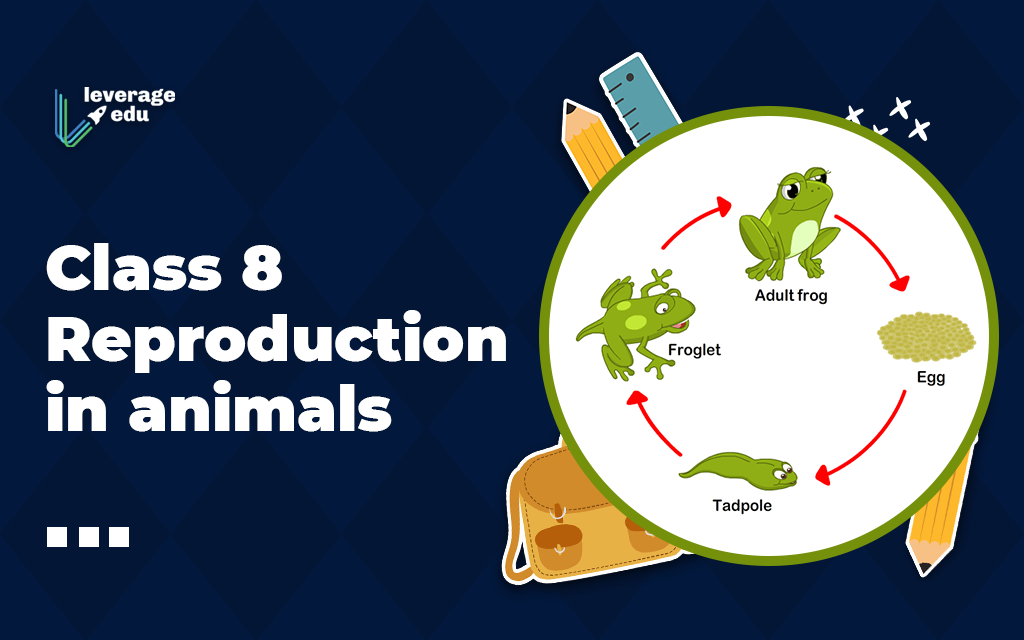
Reproduction in Animals Class 8 Notes, Questions, PPT Leverage Edu
Reproduction in Animals Class 8 Extra Questions Very Short Answer Type Question 1. Indicate whether the following statement is true or false: A zygote is formed as a result of fertilization. Answer: True Question 2. Indicate whether the following statement is true or false: An embryo is made of a single cell. Answer: False Question 3.

Class 8 science reproduction in animals worksheets
The young one top is formed outside the body in water from the zygote formed inside eggs. Question. 9 After fertilisation, the resulting cell which gives rise to a new individual is the. (a) embryo (b) ovum (c) foetus (d) zygote. Answer. (d) After fertilisation (i.e. combining of sperm with the egg), zygote is formed.
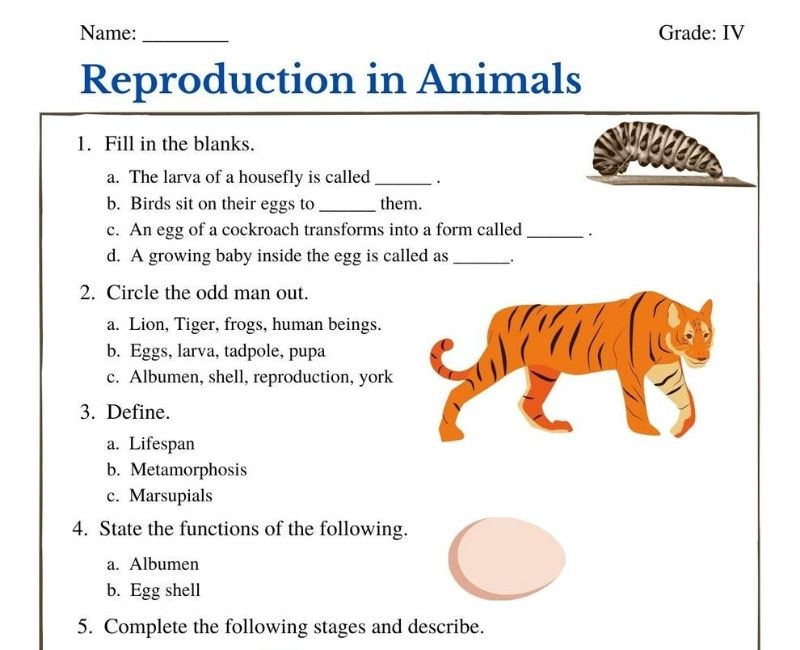
Class 4 Reproduction in Animals Worksheets Practice Makes Perfect
Science Chapter 9 of Class 8 is about reproduction in animals. This chapter is about learning the different modes of reproduction, like sexual reproduction and asexual reproduction. In the sexual reproduction part, the students will learn about the male reproductive organs, female reproductive organs, and fertilisation.

Top 103 + Questions on reproduction in animals class 8
Asexual Reproduction. Reproduction in Animals Class 8 CBSE Science Chapter 9- Extra Questions to Practice (Solved) 1. What do you mean by Reproduction? Ans. Reproduction is a biological process in which new organisms are produced from their parents. 2. What do you mean by fertilization? Ans. The fusion of ova and sperm is called fertilization. 3.
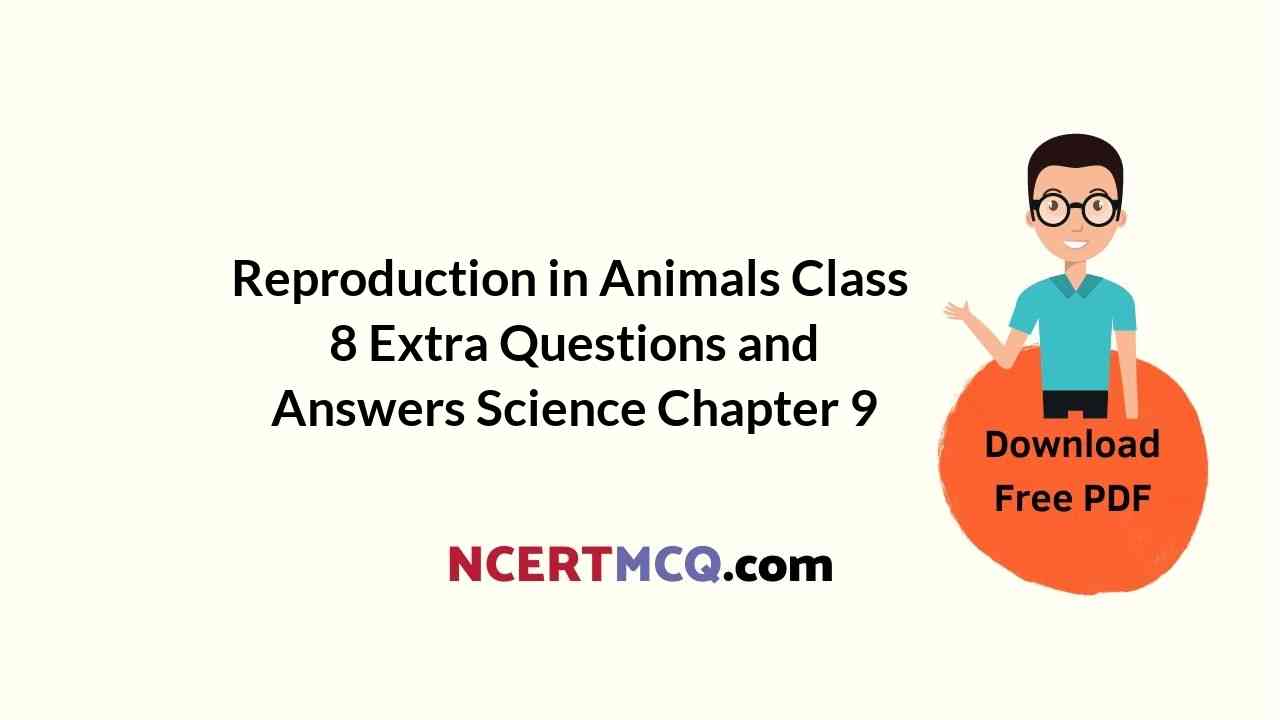
Online Education for Reproduction in Animals Class 8 Extra Questions and Answers Science Chapter
Example: Amoeba. Amoeba reproduces by binary fission, which is dividing into two cells. If one parent cell gives rise to many daughter cells, this type of fission is called multiple fission. To know more about Binary Fission, visit here. Budding A bud starts as an outgrowth of the parent body.

Top 123 + Reproduction in animals class 8 questions and answers
Question 1. Explain the importance of reproduction in organisms. Answer: Reproduction is a vital phenomenon on this planet earth which is essential for existence and continuity of life and species on it, generation after generation. Question 2. Describe the process of fertilisation in human beings. Answer:
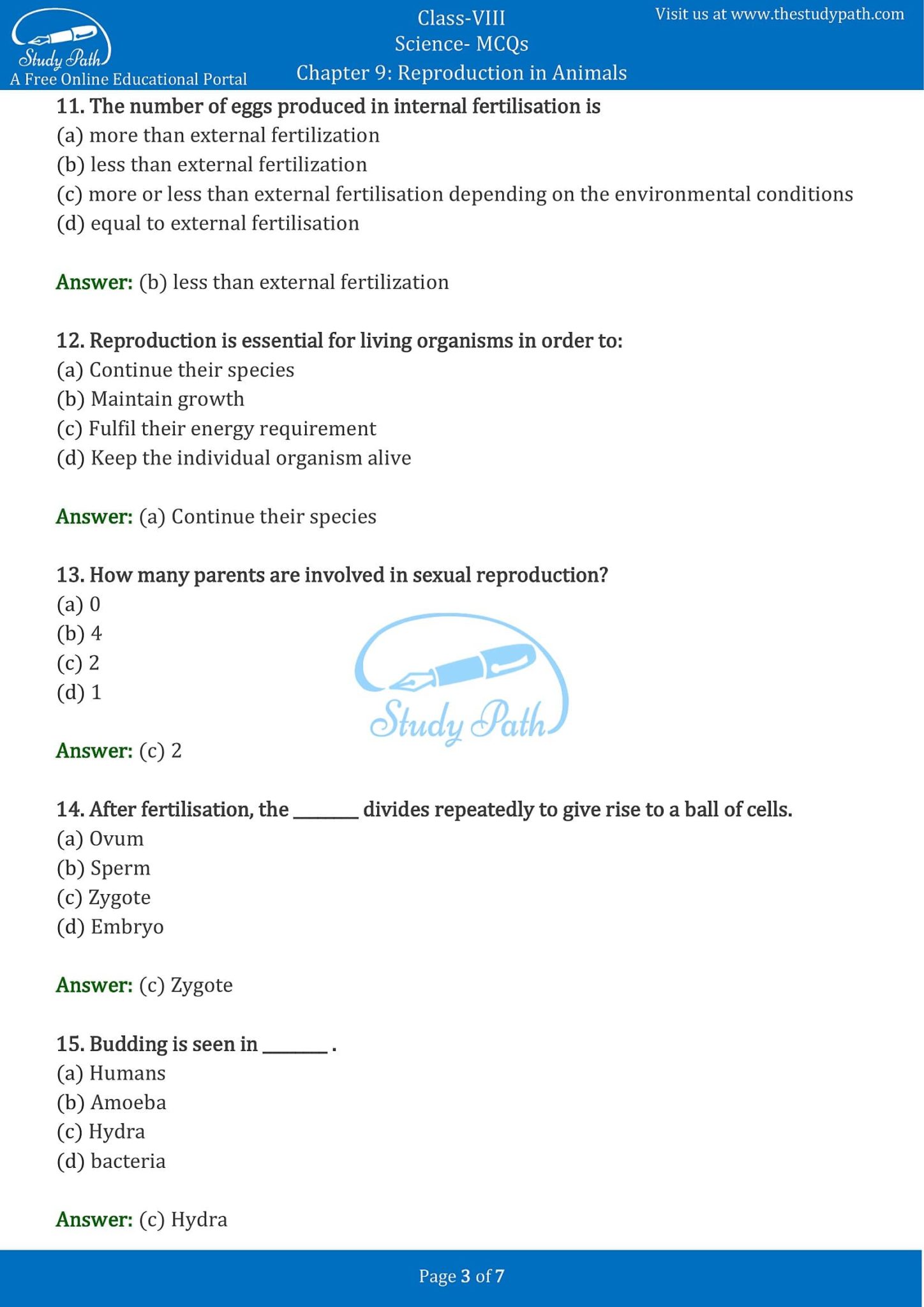
Class 8 Science Chapter 9 Reproduction in Animals MCQ with Answers
Question 1: Name two animals which reproduce sexually. Answer: Cow, Elephant Question 2: Name two animals which reproduce asexually. Answer: Hydra, Amoeba Question 3: Which type of reproduction involves gametes? Answer: Sexual reproduction Question 4: Which type of reproduction does not involve gametes? Answer: Asexual reproduction

Reproduction In Animals Class 8 Science Development of Embryo in Human YouTube
Question 1 Smith is observing a cow giving birth. After that he thinks that why do hens lay eggs instead of giving birth like cow. Describe two different types of animals based on giving birth. Answer Question 2 What is incubation? Why do hens perform incubation? Answer Question 3 What is In-vitro Fertilisation? Answer Question 4
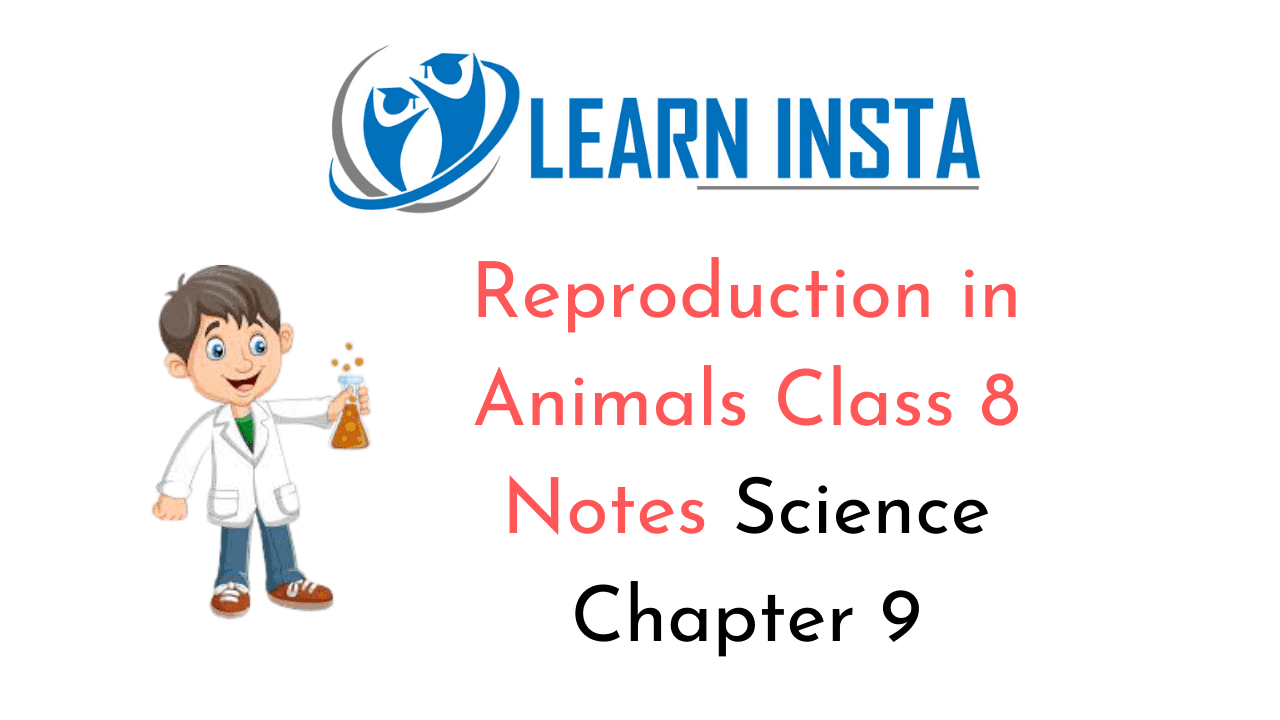
Reproduction in Animals Class 8 Notes Science Chapter 9
Question 1. What is reproduction? Answer: Reproduction is the biological process by which new individual organisms are produced from their parents. Question 2. What is sexual reproduction? Answer: Reproduction which involves the fusion of male and female gametes is known as sexual reproduction. Question 3. What is fertilisation? Answer:

Top 104 + Worksheet on reproduction in animals for class 4
Reproduction in Animals Class 8 MCQ Test (Online Available) FREE MCQ Test Reproduction in Animals Test - 20 10 Marks 10 Minutes Start Test Reproduction in Animals Test - 19 10 Marks 10 Minutes Start Test Reproduction in Animals Test - 18 10 Marks 10 Minutes Start Test Reproduction in Animals Test - 17 10 Marks 10 Minutes Start Test
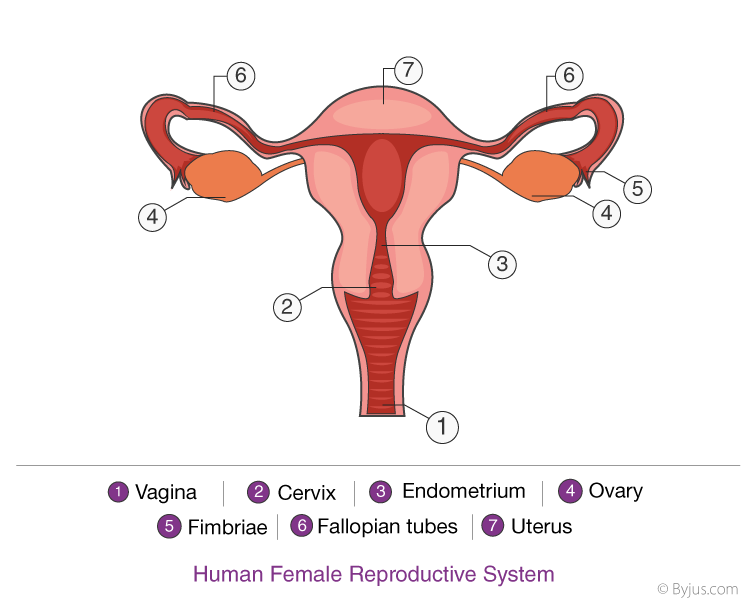
Reproduction in Animals Class 8 Chapter 9 Notes Extra Questions
Question 1. The number of modes by which animals reproduce are (a) two (b) three (c) four (d) none of these Answer Question 2. Binary fission is observed in (a) Hydra (b) yeast (c) Amoeba (d) human being Answer Question 3. Asexual reproduction is observed in (a) cow (b) buffalo (c) sponge (d) hen Answer Question 4.

Top 123 + Reproduction in animals class 8 questions and answers
1. Where are the ovum or the eggs formed? (a) testes (b) penis (c) ovary (d) ovident 2. Where do the fusion of the sperm and the ova usually take place? (a) uterus (b) testes (c) ovary (d) oviduct 3. Animals exhibiting external fertilisation produce numerous gametes. Justify with a reason from the one given below:

Top 40 + Reproduction in animals class 8 notes study rankers
The Science NCERT Solutions for Class 8 provided here shed light on modes of animal reproduction, reproductive organs, sexual mode of reproduction, asexual mode of reproduction, fertilisation and its types, binary fission and budding modes of asexual reproduction. NCERT Solutions for Class 8 Science Chapter 9 Reproduction in Animals Download PDF
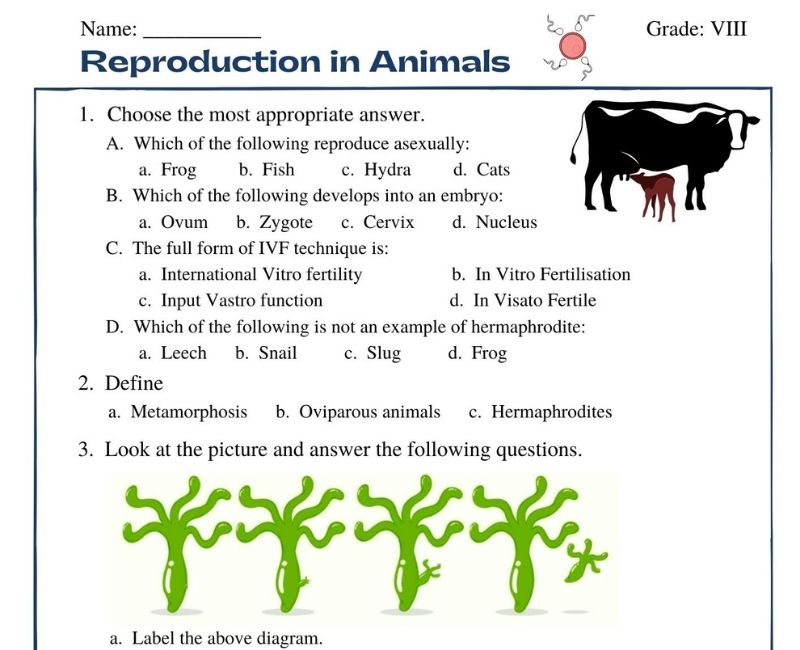
Top 108 + Reproduction in animals class 8 extra questions and answers
Access free printable worksheets for CBSE Class 8 Science in PDF with Chapter wise Important Questions as per Latest NCERT Syllabus. These Practice Worksheets, Workbooks, Exercises help Grade 8 students to understand various topics, practice skills and improve their subject knowledge which in turn helps them to improve their academic performance.
CBSE Class 8 Science Reproduction in Animals Assignment Set D
Get Notes, NCERT Solutions and Extra Questions of Chapter 9 Class 8 NCERT - Reproduction in Animals. Teachoo provides the best content to learn about Reproduction with NCERT questions, worksheets, extra questions and revision notes. In this chapter, we will learn. What is Reproduction. Different Modes of Reproduction.
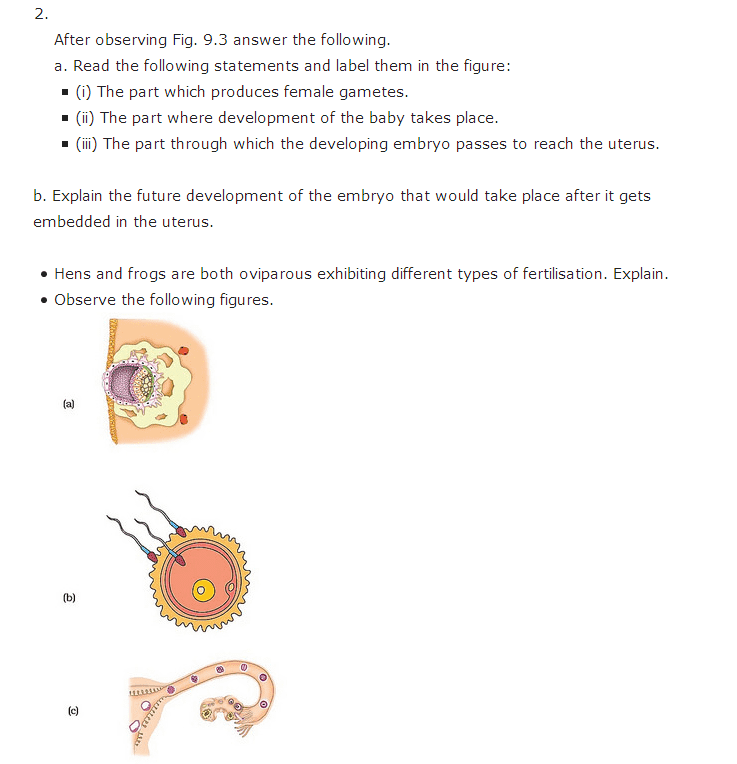
Top 107 + Cbse class 8 reproduction in animals extra questions
Solution: Binary fission is a type of asexual reproduction seen in unicellular organisms. In this method, first, the nucleus divides, followed by cytoplasmic division. This forms two daughter cells from one parent cell. Therefore, Paramecium dividing itself to form two daughter cells represents binary fission. 8.